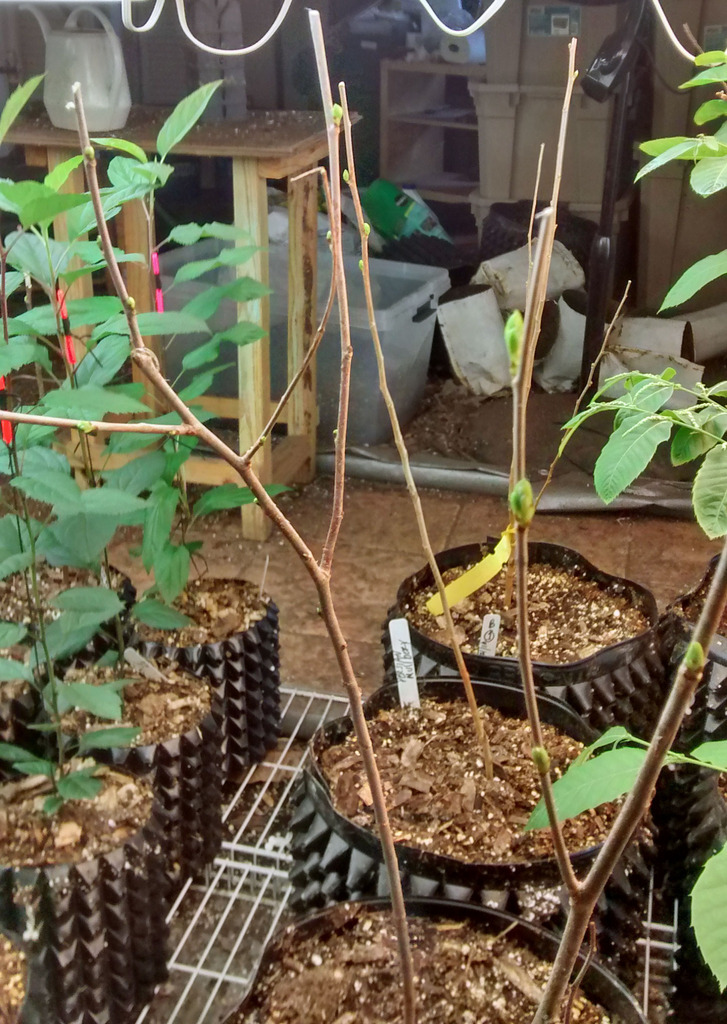yoderjac
5 year old buck +
I decided to add a couple mulberry to my plan this year, mostly for turkey. I bought 4 bare root trees to get me started this winter. I potted them up in 3 gal RB2s and put them in my cold room with pawpaw, Seguins, and Jujube. I've been slowly planting the pawpaw this spring. In fact I just planted 6 more today. As I was loading those pawpaw the other day, I noticed that the mulberry were beginning to leaf out, so I took them out of the cold room and put them under lights. This was not my plan, but I figure if they are going to leaf out, I might as well. Here is a pic:

Thanks,
Jack

Thanks,
Jack
Last edited:

